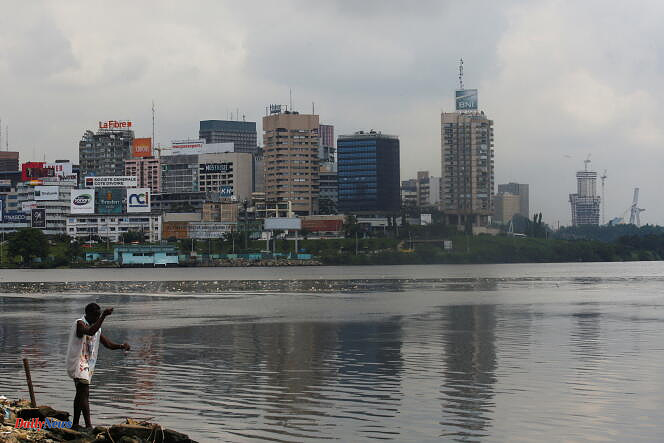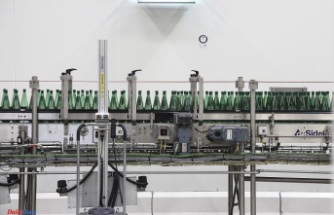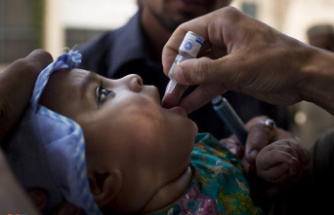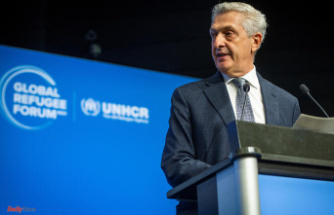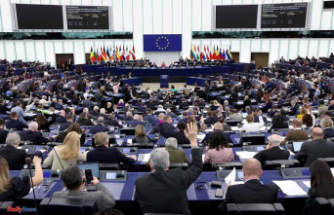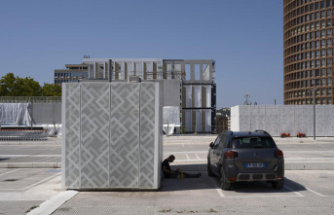Tens of thousands of sea carp floating alongside moored boats, amid all kinds of waste, in a putrid smell. It was to this sinister spectacle that residents of the commune of Koumassi, in Abidjan, woke up on Monday March 4. The cause is the pollution of the Ebrié lagoon, the largest in West Africa.
Of the 200 tonnes of waste dumped there every day, 80% is of plastic origin, according to the Ivory Coast Research Institute for Development (IRD). The remaining 20% is composed of organic and industrial liquids which, once in the lagoon, transform into sediments that are very demanding for oxygen. The day before the tragedy, heavy rains fell on the Ivorian economic capital. The rivers and canals which irrigate the city then flowed into the lagoon.
The Bay of Bietry, where two tonnes of fish were stranded over more than five hectares, is "an extremely confined space, with little water renewal, where we observe a high concentration of organic matter", explains Philippe Cecchi, director of research at IRD, specialist in lagoon spaces. At the end of the dry season, in March, the first bad weather causes a massive flow of organic waste into the lagoon. These capture the available oxygen and make the environment unbreathable for most fish, particularly carp.
On site, teams from the Oceanological Research Center (CRO) observed oxygenated water at less than one milligram per liter (mg/L), well below the 4 mg/L necessary for the survival of species. Such quantities of black water “poison the basin and make aquatic species extremely vulnerable,” specifies Philippe Cecchi.
This phenomenon of anoxia (when the quantity of oxygen drops suddenly) is not new. Local residents are accustomed to schools of dead fish, but not in such proportions. “We have never had so many corpses at once,” attests Thérèse, a cook sitting in front of the brazier of her restaurant in Bietry. No fish from the bay will be braised there for several days, the authorities having immediately banned fishing to prevent them from ending up in Abidjan kitchens.
“Evictions”
Visiting the site on Tuesday March 5, the Minister of the Environment, Jacques Assahoré Konan, urged citizens and industrialists to “avoid destroying the lagoon with dangerous products.” A challenge, if we take into account the thirty or so untreated effluents which reach the lagoon daily – starting with those from the slaughterhouse which adjoins the damaged bay – and the growing demographic pressure exerted on the banks.
“Faced with urban pollution, the Ministry of the Environment remains powerless,” regrets Bernard Yapo, director of the Ivorian Anti-Pollution Center (Ciapol), who pleads for “a real public sanitation policy.” To stop the runoff of waste, the government is increasing projects: in 2021, thirty-two kilometers of pipes were installed in the districts of Cocody and Yopougon to connect them to the Koumassi wastewater treatment plant. According to the National Office of Sanitation and Drainage (ONAD), only 40% of Abidjan residents are currently connected to it. And to unclog the gutters, fourteen new sludge treatment stations are planned in eleven cities across the country.
But cleaning up Abidjan and its waterways is sometimes only possible at a high social price, which the authorities say they are ready to assume. Some precarious homes along the banks of the lagoon are threatened with destruction. For three weeks, the “evictions” have continued, fueling the discontent of residents, left most of the time without solution, and political tensions. A new operation is planned for this Monday near the Anoumabo canal, a receptacle for wastewater from the municipalities of Marcory and Koumassi. According to the government, “notifications of formal notice were sent [to the populations] and have now expired since February 15.”
With these expulsions, the Ministry of the Environment wants the canal to “recover its initial ecological function, which is to ensure a natural evacuation of rainwater towards the Ebrié lagoon, while putting in place appropriate sanitation systems”. According to UN-Habitat, Abidjan is expected to increase from 6 million inhabitants today to 10 million in 2040. A growth that makes the search for a solution to maintain the lagoon as a livable space for men and women more urgent. aquatic species.

